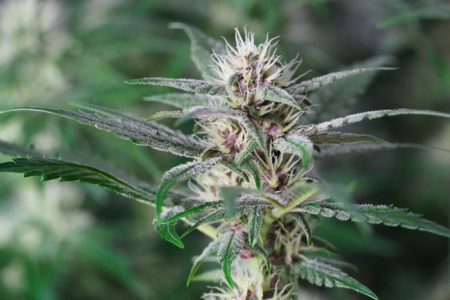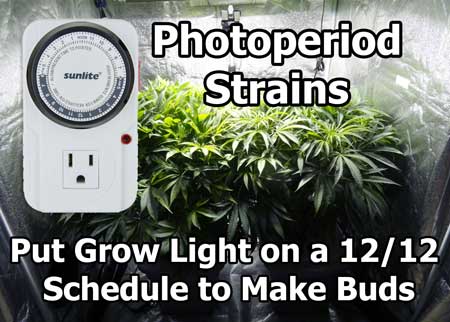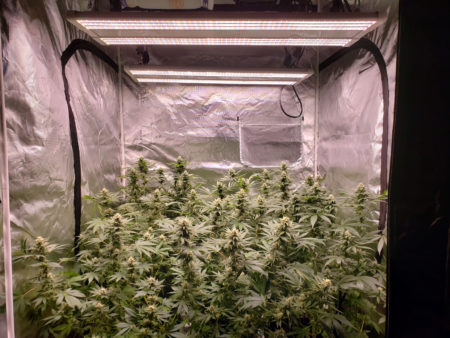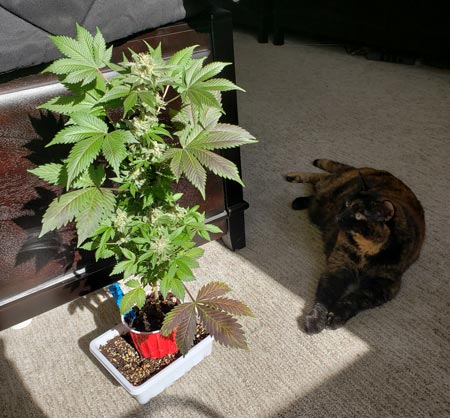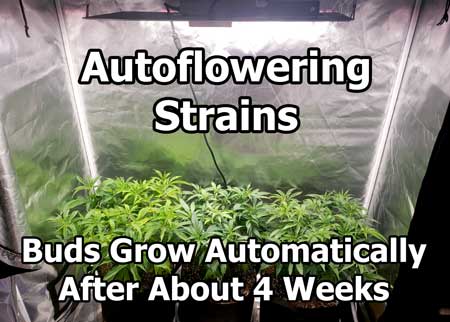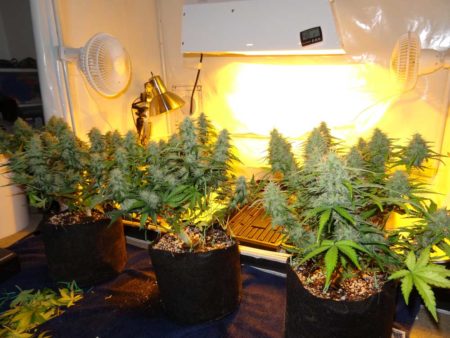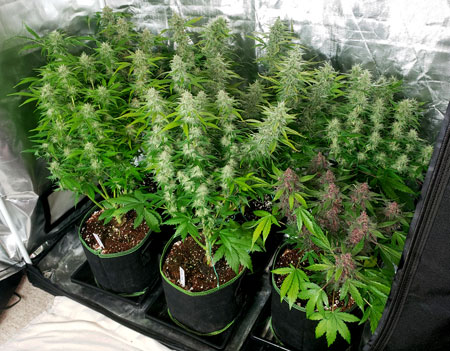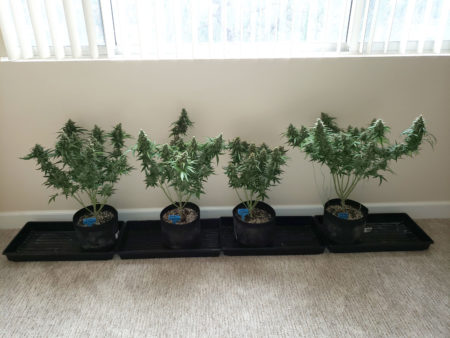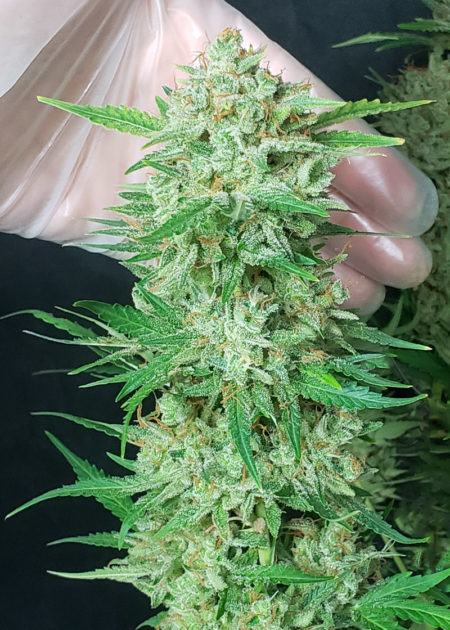by Nebula Haze
If you’ve just started growing marijuana for the first time, you may be a little overwhelmed by all your strain options. (Where can I order cannabis seeds online?). Two common types of cannabis strains are photoperiod (standard/traditional) and auto-flowering (boutique strains that are ready to harvest much faster). If you don’t know what that means, it can be a little confusing. Today I will share the differences as well as pros and cons of auto-flowering vs photoperiod strains so you can pick the right option for your cannabis garden.
The main difference is photoperiod cannabis plants need 12-hour dark periods to start making buds to simulate the long nights of autumn (typically done by putting grow lights on a timer), while auto-flowering strains automatically start making buds about a month after germination (without any change in light schedule).
Photoperiod plants won’t make buds until they get “long nights” (12-hour daily dark periods), while auto-flowering plants automatically start making buds after about a month from germination.
Photoperiod Cannabis Strains
In the wild, cannabis plants sprout in spring, grow throughout the summer, and start making buds before winter. A 12/12 light schedule (12 hours light/12 hours dark) “tells” a photoperiod plant that autumn is coming and plants start making buds in preparation. If photoperiod plants don’t get long nights, they “think” they’re in an endless summer and continue growing stems and leaves forever.
Once photoperiod plants start flowering, they typically take 8-12 weeks before buds are ready to harvest (the length of the flowering period depends on the strain). If plants get any light during the dark period, even a small “light leak”, buds won’t form normally. This means photoperiod plants need to be grown in a space that can be completely light-proofed (like a grow tent).
On average, plants double in size after the switch to 12/12, which means it’s typically initiated when plants are half the final desired size. Most growers take 4-8 weeks to grow their plants to half the final desired size. When added to the flowering stage, that means seed to harvest takes about 12-20 weeks or 3-5 months.
Pros of Photoperiod Strains
- Height control – You get a good amount of control over the final height since you choose when plants start flowering. You can grow plants as big as you want
- More forgiving to slow starts – Photoperiod strains allow time for recovery if a plant grows slowly or gets sick in the vegetative stage
- Strain choice – Much bigger choice for photoperiods strains vs auto-flowering strains. Most strains are photoperiod strains.
- Clones – Photoperiod plants give you the ability to use clones. Clones are when you cut off a piece of a vegetative plant to grow a new identical copy plant. This is possible because photoperiod plants will not start flowering until you initiate 12/12. This allows you to get specific “cuts” or make copies of your favorite plants for future grows.
- Potency – Photoperiod strains have more options for THC or CBD levels. For example, there are lots of photoperiod strains with THC above 25%, but few auto-flowering strains with THC levels that high. There is much greater choice and variation because more breeders are developing photoperiod strains.
- Yields – With bigger plants, you have the ability to yield more per harvest
Cons of Photoperiod Strains
- Longer grow time – Photoperiod plants take significantly longer to grow (3-5 months from seed to harvest on average)
- Dark periods – Initiating a 12/12 light schedule isn’t too hard since you just put plants in a dark space with the grow light on a timer, but this does add extra steps and points of failure. For example, if plants are exposed to light leaks during their dark period, they will revert back to the vegetative stage. Dark periods are also inconvenient because you can’t check on your plants for 12 hours every day. This can be inconvenient around a work schedule.
Quick Summary for Photoperiod Strains
Vegetative Stage – Photoperiod plants grow only stems and leaves until they get long nights
- You should keep plants in the vegetative stage until they’ve reached half the desired size
- You have as much time in the vegetative stage as you want
- Typically growers give plants 18-24 hours of light a day
Flowering Stage – Photoperiod plants start making buds (flowering) once they get a 12/12 schedule
- Growers typically put grow lights on an electrical timer (12 hours on, 12 hours off)
- Outdoor photoperiod plants start making buds when nights start getting long in late summer
- Plants revert back to vegetative growth if they get light during their dark period
- Grow space should be light-proof (often done by growing plants in a grow tent)
- Plants about double in height after the switch to 12/12 (some strains stretch more or less, but the strain details will typically tell you how long to expect)
- This gives you a good way to help control the final size (initiate 12/12 when plants have reached half the final desired size)
You can make photoperiod plants as big as you want. With powerful grow lights like 600W of LEDs in a 4’x4′ grow tent, you can easily harvest over 1 pound of buds even if they have a slow start.
Autoflowering Cannabis Strains
Auto-flowering plants start growing buds after about 3-4 weeks from germination, and plants are ready to harvest about 5-8 weeks later on average (the timeline depends on strain). This gives a total grow time of 8-12 weeks or about 2-3 months from seed to harvest. As a grower, the only thing you need to worry about is keeping them happy and healthy until buds are ready to pick. This can simplify the growing process because growers don’t need to worry about dark periods. This makes growing an auto-floweirng cannabis plant more like a typical houseplant. You can even grow an auto-flowering plant in a window. However, the more light plants get a day, the bigger the final yields (up to a point).
Auto-flowering plants are kind of like a house plant. You can even grow one in a window. Note: Don’t leave your cat alone with any cannabis plant unless you want a bunch of bites in your leaves 🙂
The above plant was Zkittlez Auto
Like their photoperiod counterparts, auto-flowering plants about double in size after they start flowering. That means the final size of the plant depends on how big the plant gets during the crucial 3-4 weeks of life. Better care, bigger pots, nutrients in the water, and strong light all help plants get bigger faster.
Pros
- Fastest harvest – Autoflowering plants are typically ready to harvest in 2-3 months from germination, which is significantly faster than most photoperiod plants
- Rarely get overgrown – Auto-flowering strains typically won’t get huge or out of control. If you’re looking to grow smaller plants, auto-flowering strains will help keep size in check.
- Dark periods don’t matter – Since autoflowering plants start automatically making buds without dark periods, you don’t need to worry about light leaks or putting grow lights on a timer. You’ll be able to check on your plants any time of the day without worrying about messing up their light periods.
- Great yields for the time – Auto-flowering plants tend to get lower yields than photoperiod plants because plants stay smaller on average. However, yields are similar for plants of the same size in the same setup. That means auto-flowering plants tend to get more yields for the amount of time. For example, it might take 2 months to grow a 3 oz auto-flowering plant, while it would take at least 3 months to grow a 3 oz photoperiod plant. How? Auto-flowering plants get 18+ hours of light a day while making buds, compared to just 12 hours of light a day for photoperiod plants. Light is like food for plants, and the extra hours of light per day increase the amount of buds that can be grown in a specific time frame.
- More harvests per year – You can produce 4+ big harvests per year with auto-flowering strains, vs about 3 times per year with photoperiod strains.
- Start plants whenever and put them wherever – With an auto-flowering plant, you can sprout a new seed whenever and it won’t matter. Plants will grow and be done without input from you. With photoperiod plants, you typically start all the plants together so that you can put them in the flowering stage together (you can’t put vegetative photoperiod plants in a 12/12 space or they’ll start flowering). That means you typically need to grow photoperiod plants in batches, while auto-flowering strains give you the ability to start a new plant at any time and stick it in the same grow space.
Cons
- Less size control – Plants automatically start flowering after about 4 weeks and then double in height (on average) after that. Although you can control the height and shape of the plant using pruning and bending techniques, the biggest factor in the final overall size of your plant is how big it gets before it starts flowering. Better care, bigger pots, nutrients in the water, and strong light all help plants get bigger faster.
- Less forgiving to slow starts – If plants get sick or stunted during their first 4 weeks of life, the plants will stay small and stunted forever.
- Smaller strain choice – There are excellent, potent auto-flowering strains that produce dispensary-quality buds. However, in general, there are fewer auto-flowering breeders and fewer options.
- No clones – All auto-flowering plants are started from seed because their internal time clock goes too quickly to make clones and let them recover. This means there’s no way to take a copy of a plant you like and grow it again in the future.
Quick Summary for Auto-Flowering Strains
Vegetative Stage – Auto-flowering plants grow only stems and leaves for the first 4 weeks
- Most growers give plants 18-24 hours of light a day (any light schedule will work, but more hours of light tends to increase growth rates)
- The rate of growth at this stage has a big effect on the final plant size
- Plants start making buds after about 4 weeks
Flowering Stage – Auto-flowering plants start making buds (flowering) after about 4 weeks from germination
- Plants about double in height after buds start forming (some strains stretch more or less, but the strain details will typically tell you what to expect)
- Most growers give 18-24 hours of light a day
Auto-flowering plants tend to stay small since they go from seed to harvest in under 3 months. These auto-flowering plants produced about 7 ounces.
From left to right: Sweet Critical Auto, Sour Diesel Auto, Blue Mazar Auto
However, if you take really good care of auto-flowering plants for the first 4 weeks and give them a lot of light, they can grow much bigger. These auto-flowering plants reached half this height in the first 4 weeks and produced about 11 oz under the same grow light as above.
Counter-clockwise from top left: Alaskan Purple Auto (did not turn purple), White Widow Max Auto, Kandy Kush Auto, Pink Kush CBD 30:1 (short purple plant), Zkittlez Auto, Gelato Auto
Recommended Auto-Flowering Strains
While we’re here, I figured I’d share some of my favorite auto-flowering strains.
- Alaskan Purple Auto by Seedsman – Buds don’t always turn purple (cold nights can help bring out the color) but no matter the color of the buds, the potency and yields are great.
- Amnesia Auto by MSNL – I’ve harvested several of these plants and was pleased with the results every time. Plants can get big but respond well to training. Buds produce strong cerebral effects, and yields were good-to-great.
- Black Jack Auto (American stabilized version) – These plants responded well to plant training and produced nice yields. I really enjoyed the strong yet unique bud effects of this strain. It reminded me of a sativa/haze with more of a body stone.
- Bloody Skunk Auto by Sweet Seeds – Impressive purple bud color on most plants, great yields, lovely effects, and an overall easy strain to grow.
- Blue Critical Auto by Dinafem – This plant naturally grew wide and bushy with excellent yields and bud quality.
- Cinderella Jack Auto by Dutch Passion – Good yields with dense buds that look nice, but this strain was especially a winner in the potency department. The buds ended up being a fan-favorite due to the strong mental and physical effects.
- Gelato Auto – Easy to grow with buds that smell amazing. This didn’t get the best yields, but the bud quality was worth it.
- Pineapple Express Auto by G13 Labs – An extremely popular autoflowering strain. Plants stay short, are quick-to-harvest even for an auto, and the sparkle-encrusted buds smell like heaven.
- Pink Kush CBD 30:1 by Seedsman – Medicinal strain with under 0.5% THC, beautiful purple buds, quick-to-harvest, tends to stay short.
- THC Bomb Auto by Bomb Seeds – I’ve grown 5 different plants of this strain over multiple grows in different setups, and every one came out marvelous. Easy to grow, great yields, beautiful sparkly buds, and potent effects. Highly recommended!
- Ultimate Auto by Dutch Passion – Average potency buds, but the best yields of any auto-flowering plant I’ve ever grown. Always yields twice as much as the next auto-flowering plant in the tent. However, plants can get big so watch the height! A great choice for someone who wants classic bud effects that aren’t too overwhelming.
- White Widow Max Auto by MSNL – The plants grew big but with a good bushy structure (not too stretchy), responded well to training, and produced enormous yields of high-quality bud.
- Zkittlez Auto (American stabilized version) – This strain has grown fast and healthy for me and produced fat buds that smell sweet and look gorgeous.
From left to right: Blue Critical Auto, Critical+ CBD Auto, Sour Diesel Auto, Black Jack Auto
Recommended Autoflowering Breeders
Many other breeders also produce great auto-flowering strains (Dutch Passion, FastBuds, Barney’s Farm, etc.), but the following breeders stand out for consistency.
- Bomb Seeds
- Dinafem
- G13 Labs
- Mephisto – unfortunately, they can’t seem to scale up their operations and strains sell out constantly (keep checking back or sign up for the newsletter on the bottom of the Mephisto website to get updates when they release batches of seeds)
- MSNL
- Sweet Seeds
Zkittlez Auto buds aren’t as dense as some strains, but the smell and bud effects were out of this world

